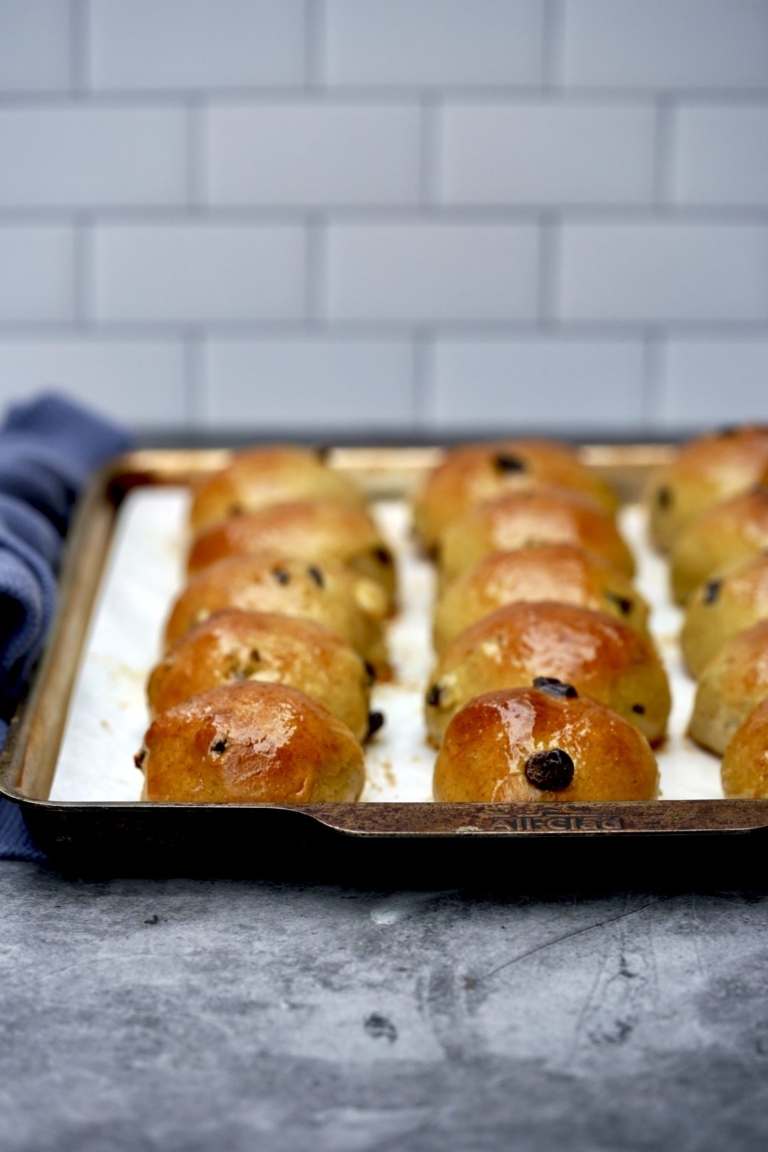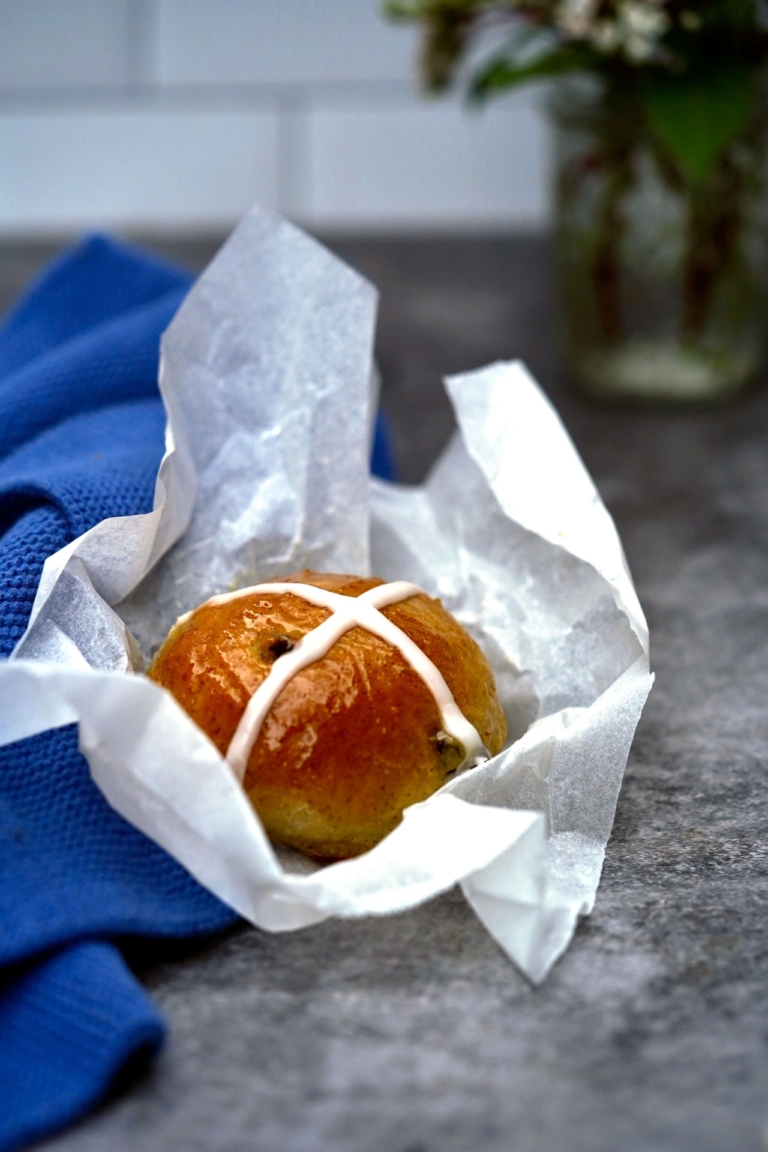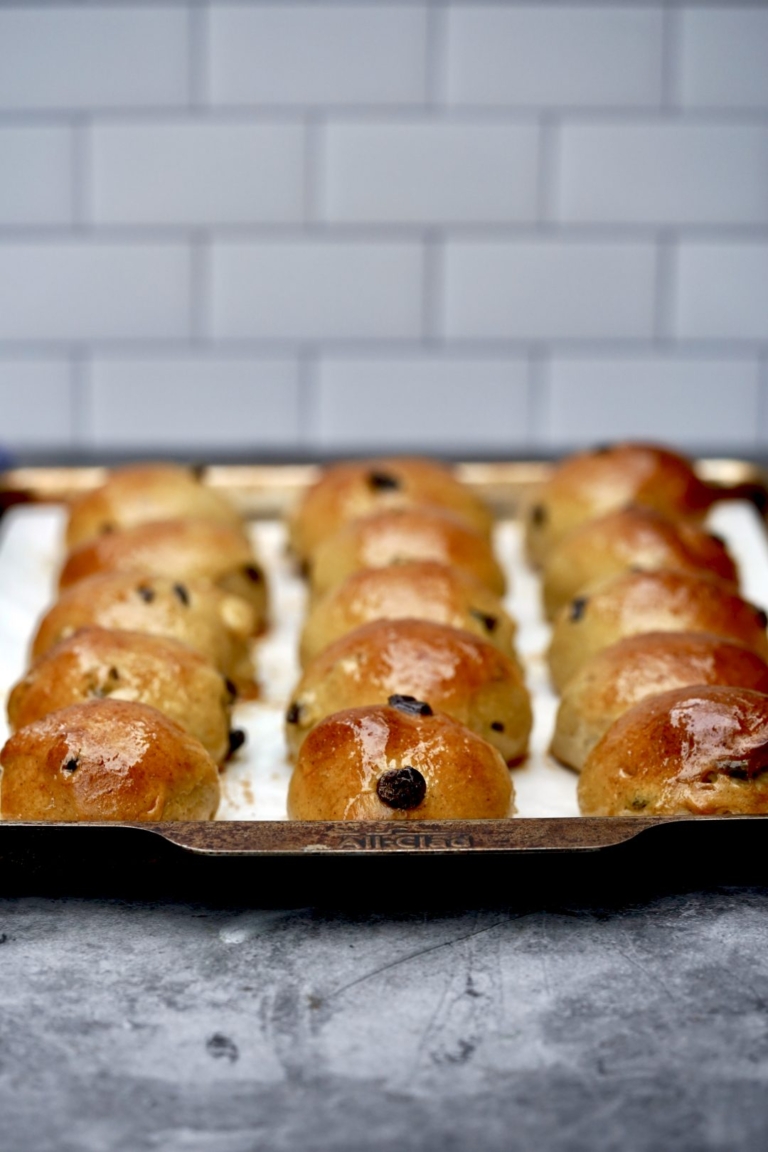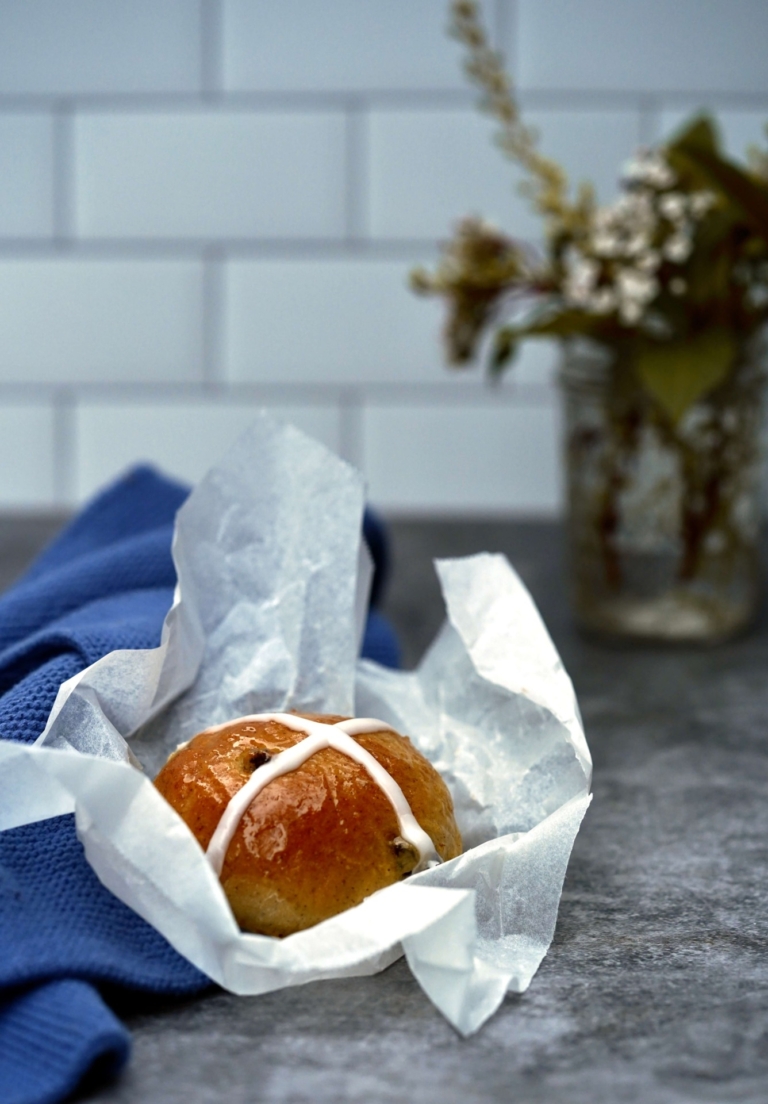Hot Cross Buns
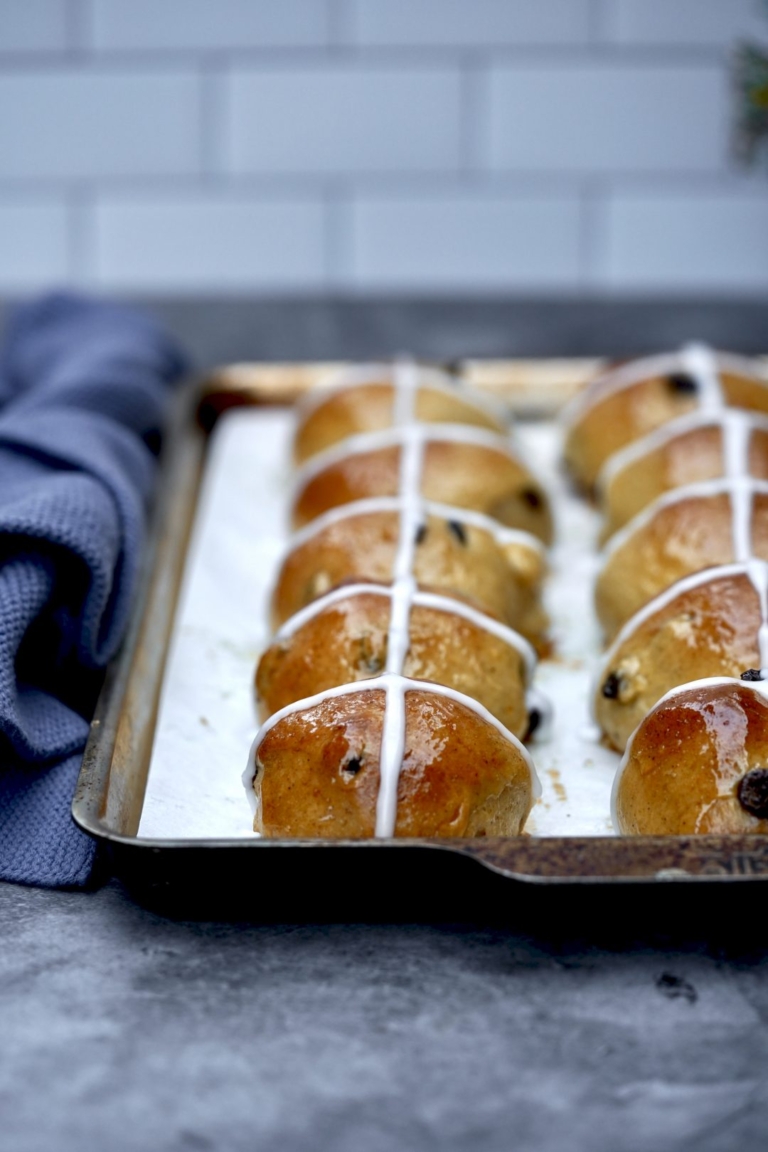
I’m Jewish, but I was born Christian. I’ve blogged about this before. The short story is, that I converted years ago when I got married. Growing up, my family was not religious at all, but we celebrated the major Christian holidays, mainly through food, family time, and gifting. Easter was a favorite. I loved glazed ham and Easter baskets and looked forward to both each year. Hot cross buns were not something my family regularly ate, although they always intrigued me. But it wasn’t until recently that I took a deep dive into their origin and developed my recipe to share with you.
What Exactly Are Hot Cross Buns?
A hot cross bun is a yeasted sweet bun that is typically lightly spiced and studded with either raisins or currants. Their trademark, the well-known cross on top, is traditionally piped in icing or etched into the dough. These famous buns have been a holiday staple of many communities for centuries and are traditionally eaten in the United Kingdom, Ireland, Australia, New Zealand, South Africa, and some parts of the Americas on Good Friday. The hot cross bun itself marks the end of Lent and different parts of the bun have a certain meaning; including the cross representing the crucifixion of Jesus, and the spices inside signifying the spices used to embalm him at his burial.
To the best of my knowledge, there isn’t an obvious explanation for why hot cross buns are as popular as they are on Easter. Some theories rely heavily on Christian symbolism, though there are several stories about their origins. Some theories talk about hot cross buns, once called Good Friday buns, being baked and eaten solely on Good Friday, while others mention them being eaten throughout Lent. Given the baked good’s long history, many legends and superstitions have had time to develop and grow around them. Here are five favorites I found in my research:
Hot Cross Bun Legends
- Created by a 12th-century monk. According to the legend, a monk marked the bun with a cross and baked the buns on Good Friday for the upcoming Easter holiday. The buns quickly gained popularity around England as a symbol of the holiday weekend. Nowadays the cross might be made of chocolate icing or cream, but, traditionally, it is made of a simple dough or a knife imprint.
- They stay fresh for a whole year. One theory is that if you hang a hot cross bun from your kitchen rafters on Good Friday, legend has it that it will remain fresh, and mold-free, for the whole year. This is a direct reference to the body of Christ, which, according to the Bible, did not show any signs of decay after his crucifixion and before his resurrection. The theory is that the bun should be replaced each year on Good Friday.
- Expel bad spirits. Due to the cross on top, hot cross buns hung in the kitchen are said to protect a home from evil spirits. They’re also said to prevent kitchen fires and ensure that all bread baked that year will turn out perfect.
- Cement friendships. It is said that those who share a hot cross bun are supposed to enjoy a strong friendship and a strong bond for the coming year.
- Considered sacred. In 1592, Queen Elizabeth I decreed that hot cross buns could no longer be sold on any day except for Good Friday, Christmas, or for burials. The Queen felt they were too special to be eaten any other day.
What Do Hot Cross Buns Taste Like?
The truth is, my hot cross buns are a little less traditional than most, with less spice and more citrus. My recipe yields a soft, yet slightly dense, bun with great flavor, but this recipe is adaptable. I use raisins instead of currents, and the combination of brown sugar and orange marmalade glaze for sweeteners. Slightly sweet, but not overly so, and I make my cross with frosting, instead of dough, because I love frosting. Some people think hot cross buns will be comparable to a traditional dinner roll and that is a true misconception, they are more similar to a breakfast sweet roll or cinnamon roll instead.
Hot Cross Buns
Ingredients:
- For the Dough:
- 2 1/2 teaspoons active dry yeast
- 1/4 cup 1/2 teaspoon sugar, divided
- 1 cup milk, warmed to 115-118 degrees F.
- 6 tablespoons unsalted butter, softened
- 2 eggs, divided
- 1/4 brown sugar
- 3 1/2 cups all-purpose flour
- 1/2 teaspoon cinnamon
- 1/4 teaspoon nutmeg
- 1/4 teaspoon salt
- 3⁄4 cup raisins or currants
For the Glaze:
- 1⁄4 cup orange marmalade
- 1 Tablespoon cold water
For the Frosting:
- 1⁄4 cup Confectioners' sugar
- 2 teaspoons cold water
Directions:
- For the Dough: In the bowl of a kitchen mixer, such as a KitchenAid, fitted with the dough hook, add the yeast, 1/2 teaspoon sugar and milk. Cover and allow to sit until foamy, about 5-10 minutes.
- Once the yeast is frothy, add the butter, 1 egg, the remaining 1/4 cup of sugar, brown sugar, flour, cinnamon, nutmeg and salt, mix on low speed for 8-10 minutes, until a smooth dough forms.
- Remove the dough from bowl and place on a lightly floured surface; fold in the raisins, working until just evenly distributed. Next, place the dough in a lightly greased bowl, cover with plastic wrap and let rest in a warm spot, until doubled in size, about 60–80 minutes.
- Line a baking sheet with parchment paper and set aside. Once the dough has risen, remove the dough from the bowl and place on a lightly floured work surface. Using your hands, divide the dough into 10 equal pieces.
- Working with one piece at a time, roll the dough pieces into balls. Place the balls on the prepared baking sheet, cover with a kitchen towel and let rise again until doubled in size, about 45 minutes to 1 hour.
- Preheat the oven to 325 degrees F. In a small bowl add the remaining egg and 1 tablespoon cold water for the egg wash. Using a pasty brush, lightly brush each roll with egg wash.
- Place in the oven and bake for 18-20 minutes, rotating halfway through. Remove the buns from oven and allow cool for about 15 minutes.
- For the Glaze: In a small saucepan add the orange marmalade and water and place over low heat. Stir until the mixture thins out slightly. Next, using a pastry brush, lightly brush each roll with the marmalade glaze and let stand an additional 10 minutes until the glaze sets.
- For the Frosting: In a small mixing bowl, add the confectioners’ sugar and cold water water and whist to blend. Pour the frosting into a piping bag and pipe crosses on rolls. Serve warm.

